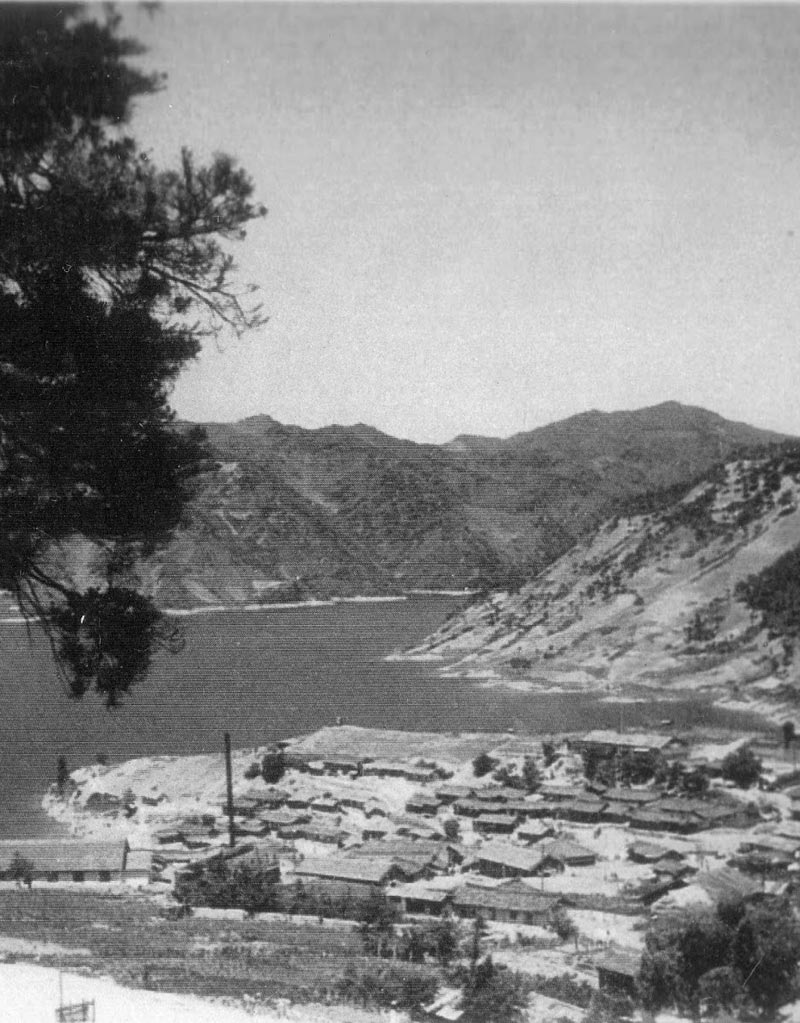What makes a Servant of God and national hero? It starts with an ordinary person in a place not too distant, in a time not so long ago, motivated by the love of God.
Elizabeth Hajek Kapaun and her husband of one year, Enos, moved the bed into the warm kitchen of the remote farmhouse in preparation for the birth of their first child. At 11:00 a.m. on April 20, 1916 – Holy Thursday – their son Emil Joseph was born. Father John Sklenar, surely the most towering and influential person in the area, baptized the boy on May 9 at the newly-built St. John Nepomucene Church in Pilsen, Kansas, three miles from the Kapauns’ 160 acre farm. Emil was christened for a life in the pious, hard-working enclave of Bohemian settlers just 40 miles south of the central Kansas town of Abilene, the boyhood home of Dwight D. Eisenhower.
Little did Enos and Bessie know that 35 years later their son would be lauded as a hero by men returning from a prisoner of war camp in North Korea. Although Chaplain (Captain) Emil J. Kapaun was the victim of malnutrition and pneumonia after spending only seven months in the camp, like his Savior, he freely parted with his life for the sake of his “boys”. “No one has greater love, than this” St. John tells us, “to lay down one’s life for one’s friends.” Father Kapaun’s story is that of a saintly hero dedicated to living a life of Christian virtue and service to his fellow man under the most difficult and despicable conditions imaginable. Father Kapaun’s heroism in the prison camp wasn’t an isolated event, however: his lifelong dedication to Christ and to His Church placed him on the path of priestly service that culminated in his ultimate sacrifice in North Korea at only 35 years old.
Emil’s German-Bohemian ancestry was typical for the residents of Pilsen in 1916 and even to this day. With only one brother, Eugene, Emil always had a close relationship with his family. He was a willing worker who was assigned chores such as gardening and weeding on the family farm. For recreation Emil enjoyed walking the pastures, hunting, swimming and fishing. Even as a youth, Emil was skilled at repairing and building implements, a talent that served him well all his life, especially in the prisoner of war camp.
The young Emil was quiet and retiring, with a keen sense of humor. Like his parents, the Kapaun boy was hard working and neighborly, and, as was typical of the German-Bohemian immigrants of the area, he was also tenacious and determined.
He attended school in Pilsen, where three Adorer of the Precious Blood of Christ Sisters (whose mother house was in Wichita) taught him through the tenth grade. He received his First Holy Communion on May 29, 1924, and he was confirmed on April 11, 1929, seven months after starting his high school education at Pilsen High School. Emil chose St. Joseph as his patron saint, no doubt already deeply impacted by his humble, hard-working life, reflective of his own upbringing. A few years later as a deacon Emil would extol these virtues to his fellow seminarians:
“Jesus wished to show that the simple, humble life is very pleasing to God. The will of God was that the Holy Family live a life of poverty and of humble labor. The life of the Holy Family was a simple life; it was marked not by the honors and glamour which the world can give, but it was marked by the peace and holiness from God. The life of the Holy Family was a life of true happiness. In order to have happiness in our Christian families we must practice the virtue of self-sacrifice.“
Discerning a call to the priesthood, Emil Kapaun entered Conception Seminary in 1930, a boarding high school and college run by the Benedictines at Conception, Missouri. He began his theological studies for the priesthood at Kenrick Seminary in St. Louis, Missouri in late summer of 1936.
After his studies, Emil Joseph Kapaun was ordained a priest by Bishop Christian Winkelmann on June 9, 1940 at St. John’s Chapel on the campus of Sacred Heart College in Wichita, now Newman University. Father Kapaun, the first Pilsen native to be ordained, celebrated his first Mass at his home parish 11 days later in the presence of 1,200 guests.
Assigned to be the assistant pastor at his home parish of St. John Nepomucene in Pilsen, Father Kapaun jumped into priestly ministry. A few years later, Bishop Winkelmann assigned Father Kapaun the additional duty of serving as the auxiliary chaplain at the Army airbase in Herington, Kansas, 16 miles north of Pilsen. This appointment lasted for 18 months in 1943-44 and allowed Father Kapaun to learn the needs of enlisted personnel and experience the satisfaction of a calling to the chaplaincy. It was here that Father Kapaun felt he was called to "spend himself for God", and after several requests, his bishop allowed him to enter the U.S. Army Chaplain Corps on July 12, 1944.
Father Kapaun attended the Army Chaplaincy School at Fort Devens, Massachusetts before reporting to his first post at Camp Wheeler, Georgia. In March of 1945, Chaplain Kapaun was sent overseas to Burma and India, where he served troops at the tail end of World War II, often travelling thousands of miles by Jeep over mountains and through jungles to visit the troops in forward positions. The Army recognized his faithful commitment to his duties and promoted him to the rank of Captain on January 3, 1946.
After leaving India, Chaplain Captain Kapaun was officially released from service. At the request of Bishop Winkelmann he enrolled at the Catholic University of America in Washington, DC in order to make use of the G.I. Bill to attain his Master’s Degree in Education. In October 1946, Father Kapaun began his classes and quickly regained a knack for studying. He completed a dissertation entitled “A Study of the Accrediting of Religion in the High Schools of the United States,” and was granted a Master’s Degree in Education in early 1948.
During Father Kapaun’s course of studies at the university, Bishop Winkelmann died and was replaced by Bishop Mark K. Carroll. At the end of his studies, Father Kapaun requested the bishop’s permission to go back into active military duty as a chaplain. Instead, Bishop Carroll wanted Father Kapaun back in the diocese and assigned him to be pastor of the largely Bohemian parish in Timken. After six months as pastor in the central Kansas town, Father Kapaun again wrote to Bishop Carroll requesting permission to re-enlist in the Army. Father Kapaun told the bishop that he loved his pastoral work in Timken, but that his conscience told him that his
priestly duty was with the men of the Armed Services. The bishop granted his request and Chaplain Kapaun reported to the Anti-Aircraft Artillery Corps at Fort Bliss, Texas in late 1948.

















